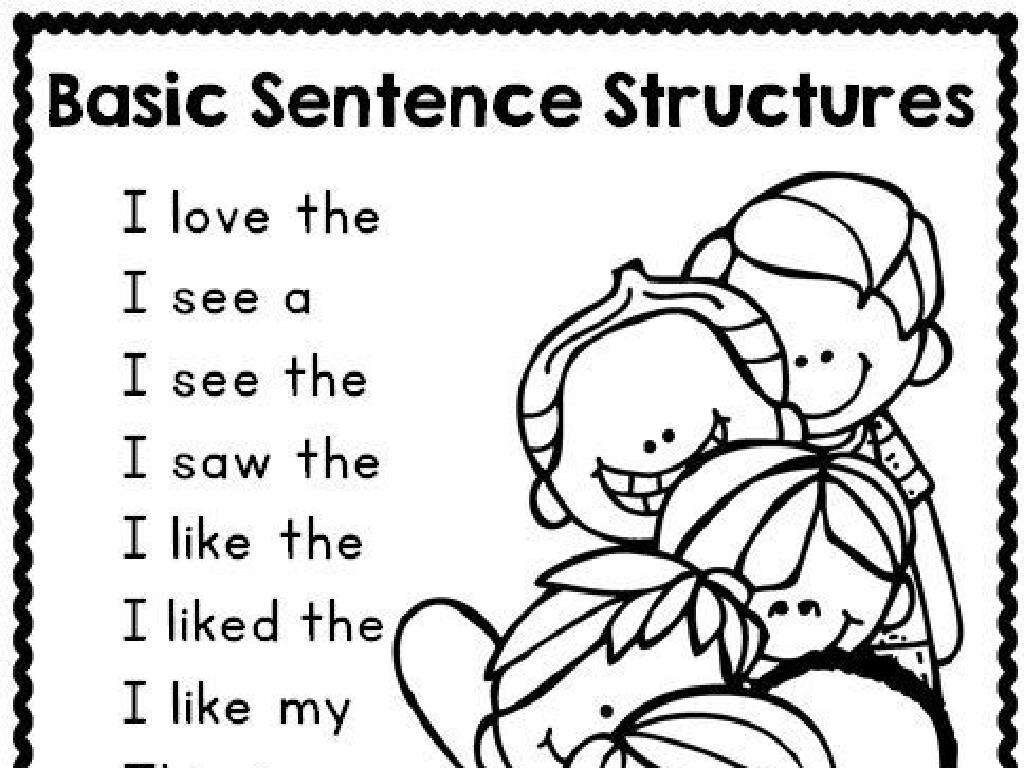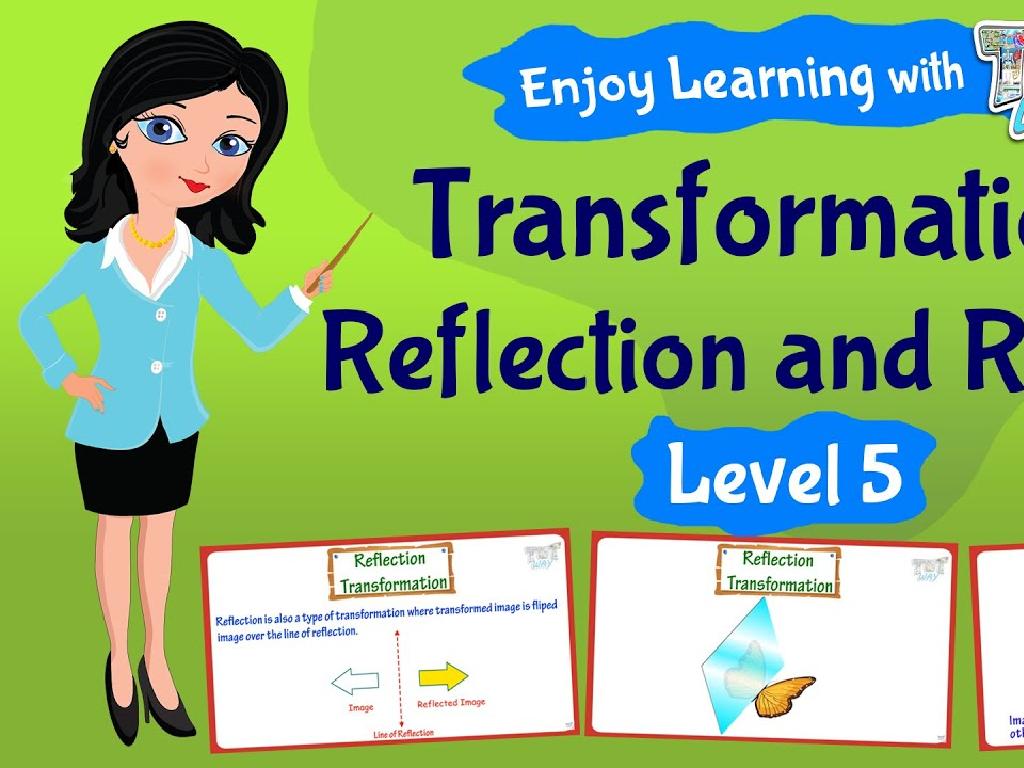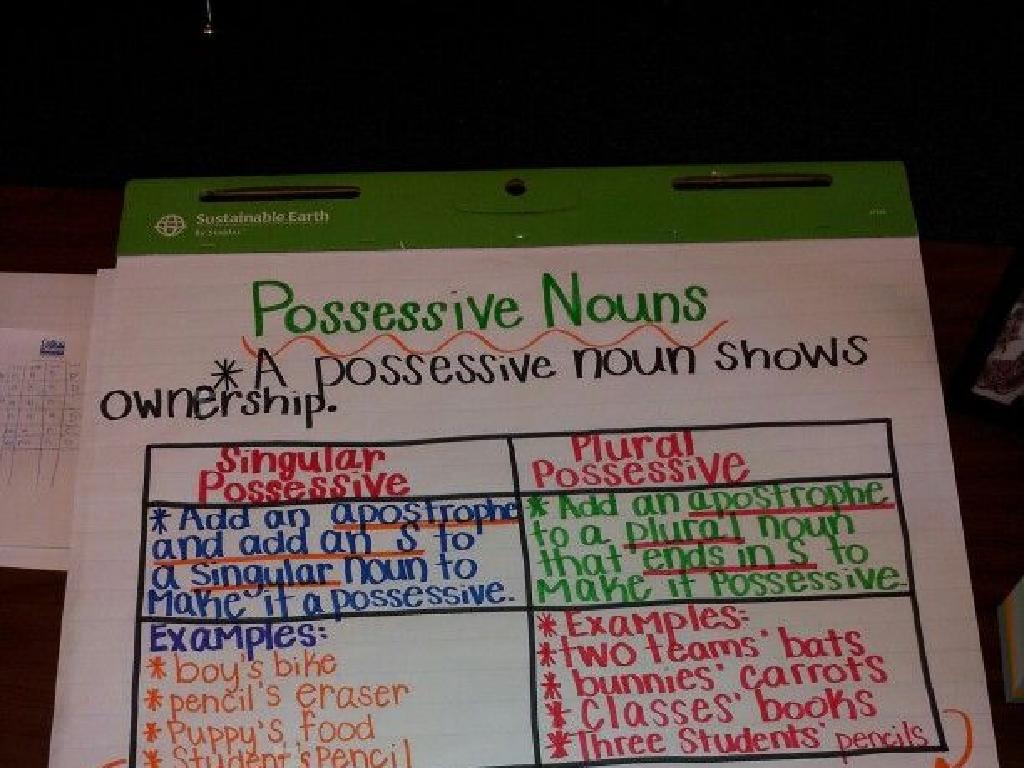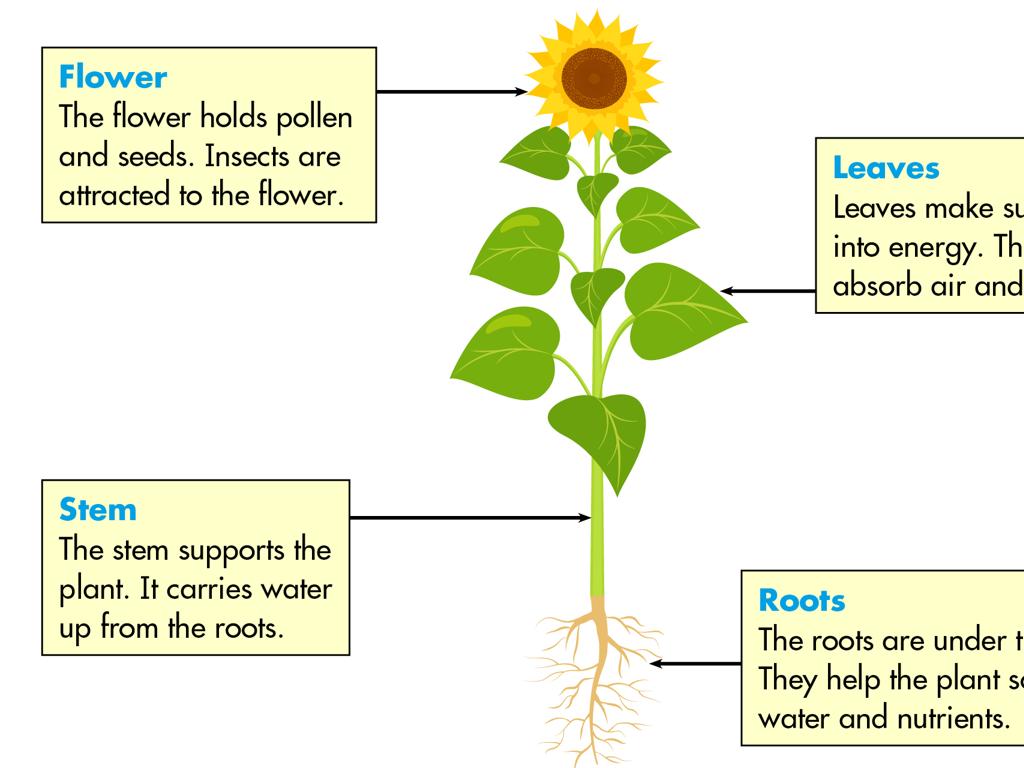Find The Long E Word
Subject: Language arts
Grade: First grade
Topic: Long Vowels
Please LOG IN to download the presentation. Access is available to registered users only.
View More Content
Finding the Long ‘e’ Sound
– Introduction to long vowels
– Discover words with long ‘e’
– Examples: ‘be’, ‘see’, ‘tree’
– Long vowels say their name
– Like ‘e’ in ‘he’ or ‘she’
– Practice with examples
|
This slide introduces first graders to the concept of long vowels, focusing on the long ‘e’ sound. Begin by explaining that long vowels are vowel sounds that say their name, just like the letter ‘e’ in ‘he’ or ‘she’. Encourage the students to think of words they know that contain the long ‘e’ sound and share them with the class. Use common and simple words as examples to illustrate the concept. During the lesson, engage the students in identifying long ‘e’ sounds in words and practice pronouncing them together. This will help students recognize the long ‘e’ sound in their reading and improve their phonetic skills.
Exploring the Long ‘E’ Sound
– What is a Long ‘E’ sound?
– It’s the ‘E’ sound in ‘E’!
– ‘Ee’ like in ‘see’ or ‘bee’
– Words that sound like ‘ee’ are our clue.
– Long ‘E’ in word positions
– It can be in the middle or end of words.
– Practice finding Long ‘E’
|
This slide introduces the concept of the long ‘E’ sound to first graders. Start by explaining that the long ‘E’ sounds just like the name of the letter ‘E’. Use common examples like ‘see’ or ‘bee’ to illustrate the sound. Highlight that the long ‘E’ sound can appear in different positions within words, not just at the beginning. Engage the students by asking them to think of words they know that contain the long ‘E’ sound and where it appears in those words. Encourage them to listen for this sound in words during reading activities and to practice writing words with the long ‘E’ sound.
Exploring Long ‘E’ Words
– ‘Tree’ has a long ‘E’ sound
– Like ‘bee’, ‘see’, and ‘knee’
– Find words with the same ‘E’ sound
– Words like ‘me’, ‘we’, and ‘he’
– Listen for the long ‘E’ in words
– Hear it in ‘beet’, ‘feet’, and ‘meet’
– Practice saying long ‘E’ words
– Try ‘green’, ‘clean’, and ‘screen’
|
This slide introduces students to the concept of the long ‘E’ sound with the word ‘tree’ as an example. Encourage the children to think of other words that share the same long ‘E’ sound. Provide guidance on how to listen for the long ‘E’ in words they hear in everyday conversation or during reading sessions. Practice pronunciation of long ‘E’ words as a class, and consider incorporating fun activities like a ‘long E’ word hunt or a matching game with pictures to words. The goal is to help students recognize and pronounce the long ‘E’ sound confidently.
Let’s Find Long ‘E’ Words!
– We’re playing a long ‘E’ word game
– Look at pictures and listen for ‘E’
– Does the word sound like ‘ee’ as in ‘tree’?
– Long ‘E’ sounds like ‘ee’ in ‘bee’
– Can you find words with the long ‘E’?
– Examples: ‘see’, ‘tree’, ‘knee’
|
This slide introduces a fun and interactive game to help first graders recognize the long ‘E’ sound in words. Show the students various pictures and ask them to identify words with the long ‘E’ sound. Remind them that the long ‘E’ sounds like the ‘ee’ in ‘bee’. Encourage them to listen carefully to the pronunciation of words. For the activity, prepare a set of pictures that represent words with the long ‘E’ sound, such as ‘tree’, ‘bee’, ‘knee’, and ‘see’. Also, have a few non-examples to ensure they are distinguishing the long ‘E’ sound correctly. This will help them in reading and spelling words with long vowels. Make sure to praise their efforts and correct gently, providing the right pronunciation as needed.
Let’s Practice Together: Long ‘E’ Sounds
– Listen to the word I say
– Does it have a long ‘E’ sound?
– A long ‘E’ sounds like ‘ee’ in ‘see’ or ‘ea’ in ‘leaf’
– Thumbs up for ‘Yes’
– Thumbs down for ‘No’
|
This interactive slide is for a classroom activity to help students recognize the long ‘E’ sound in words. The teacher will say a word out loud, and students will respond with a thumbs up if the word contains a long ‘E’ sound, or a thumbs down if it does not. Before starting, review what the long ‘E’ sound is and give examples. Possible words for the activity: ‘beet’, ‘seat’, ‘cat’, ‘tree’, ‘read’, ‘fish’. Encourage students to listen carefully and participate. This exercise will help reinforce their phonetic understanding and ability to distinguish between long and short vowel sounds.
Class Activity: Long ‘E’ Word Hunt
– It’s your turn to find long ‘E’ words!
– Receive a worksheet with words
– A fun worksheet full of different words
– Circle words with the long ‘E’ sound
– Remember, long ‘E’ sounds like ‘ee’ in ‘tree’
– Share your findings with the class
– We’ll discuss as a group afterwards
|
This activity is designed to reinforce the students’ ability to recognize the long ‘E’ sound in words. Distribute worksheets with a mix of words, ensuring that some have the long ‘E’ sound and others do not. Instruct the students to circle the words that contain the long ‘E’ sound. This could be in the middle or at the end of the word, like ‘be’ or ‘tree’. After the activity, ask students to share the words they found and discuss why they have the long ‘E’ sound. This will help them understand the concept better and learn from each other. For differentiation, some students might receive worksheets with pictures and words, while others might have only words. Encourage students to say the words out loud to hear the long ‘E’ sound.
Review and Share: Long ‘E’ Words
– Review words with long ‘E’
– Share your words with classmates
– Each student will say their words aloud
– Celebrate finding long ‘E’ words
– Praise for effort and discovery
– Understanding the long ‘E’ sound
– The long ‘E’ sounds like ‘ee’ in ‘see’ or ‘ea’ in ‘leaf’
|
This slide is meant to recap the lesson on long ‘E’ words. Start by having students review the words they’ve found that contain the long ‘E’ sound. Create a supportive environment where each child can share their words with the class, fostering a sense of accomplishment. Celebrate their success in identifying words with the long ‘E’ sound. Reinforce the lesson by explaining that the long ‘E’ sound can be found in different spellings, such as ‘ee’ or ‘ea’. Encourage students to listen to each other and perhaps even discover new words they hadn’t thought of. This activity will help solidify their understanding of long vowels and enhance their phonetic skills.
Great Work on Long ‘E’ Sounds!
– Amazing job learning long ‘E’
– Listen for long ‘E’ in daily words
– Words like ‘beetle’ or ‘tree’ in stories or outside
– Keep practicing your long ‘E’s
– Try reading books with lots of ‘E’ sounds
– You’re becoming long ‘E’ experts!
|
This slide is a conclusion to reinforce the students’ understanding and recognition of the long ‘E’ sound. Praise their efforts and encourage them to continue listening for the long ‘E’ sound in their daily lives, whether in conversation, while reading, or in the environment around them. Provide tips for practicing, such as reading books that feature the long ‘E’ sound prominently. Remind them that with practice, they will become proficient in identifying and using long ‘E’ words. Celebrate their progress and encourage a sense of accomplishment as they become ‘long ‘E’ experts’.






